Deployments
Overview
A Deployment is the task responsible for sending and uploading a configuration into a device group.
It is possible to plan consecutive deployments for the same site/device group (ex: 2 deployments targeting the "day shift" device group, one planned for Monday morning and another one for that afternoon). If the deployments have the same planning date, the delivery sequence is based on deployment creation date (the deployment that was created first, initiates first, the one created after that is deployed second, and so on).
The deployments created at account level and assigned to a site/sites can be viewed by the targeted site(s) but CANNOT be edited/deleted or canceled/archived by the respective site manager/site users. Any edition of these deployments is ONLY available at account level, in the Admin Dashboard's "Deployments" sub-module.
Deployments will only initiate if the devices of the target device group(s) fulfill the criteria defined in the "deployment profile" used for the deployment (see Deployment Criteria Profile Details) and the default device criteria (ex: If an MCL application is open, the deployment will only initiate if it is idle for, at least, 1 minute).
MCL-Mobility Platform allows you to define a Single-Site Deployment (1 deployment targeting 1 site) or a Multi-Site Deployment (1 deployment targeting several/all sites):
Single-Site Deployment
This type of deployment is directed to a site - it can deliver the intended configuration to a defined device group or to all the device groups in that site.
The defining of the deployment's target is primarily affected by the selected configuration's own settings (ex: as soon as a configuration is chosen for a deployment, it limits the options available in the New Deployment's wizard):
•Deployment of a site restricted Configuration with a specific target device model - the deployment is directed to that site and ONLY to a device group that includes the same device model.
•Deployment of a shared Configuration with a specific target device model - the deployment is directed to the site/device group with the same device model that you define.
•Deployment of a site restricted Configuration with no target device model - the deployment is directed to that site and can target a specific device group or all the device groups in that site.
•Deployment of a shared Configuration with no target device model - the deployment is directed to the site you define and the configuration can be delivered to a specific device group or to all the device groups included in the defined site.
Multi-Site Deployment
The purpose of this type of deployment is to facilitate the delivery of a configuration onto all the account's sites. Instead of planning several deployments, the intended configuration can be deployed onto every site with one single deployment.
A multi-site deployment can target all the sites in the account or be directed to sites, within the account, with the same qualification. For instance, you can create a multi-site deployment that ONLY delivers a configuration to sites with a "production" qualification.
When planning a multi-site deployment, consider the following:
•The configuration being delivered CANNOT be restricted to a single site.
•Each site in the account should have a device group with the same name/device model type. Ex: Useful if you want to update the firmware of a particular device model throughout the account.
•If you want to deploy a file (ex: an image file) to all the sites/device groups throughout the account regardless of device model, the configuration must be shared and NOT have a specific target device model.
To access the "Deployment Plans" page, click 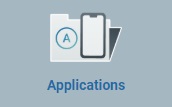 (located in the Admin Dashboard's "Control Panel"), and, in the resulting row, select
(located in the Admin Dashboard's "Control Panel"), and, in the resulting row, select  .
.
This page displays all the deployments created at account and site level. The "Site" column refers each deployment's origin.
This information has several "views" based on current deployment status which work as filters.
Use the ![]() drop-down to select the most appropriate view. There are 4 views available - "All", "Current & Planned", "Planned" and "With Errors".
drop-down to select the most appropriate view. There are 4 views available - "All", "Current & Planned", "Planned" and "With Errors".
View: All
This is the default view and it ensures the display of all deployments (planned in the current site or at account level):
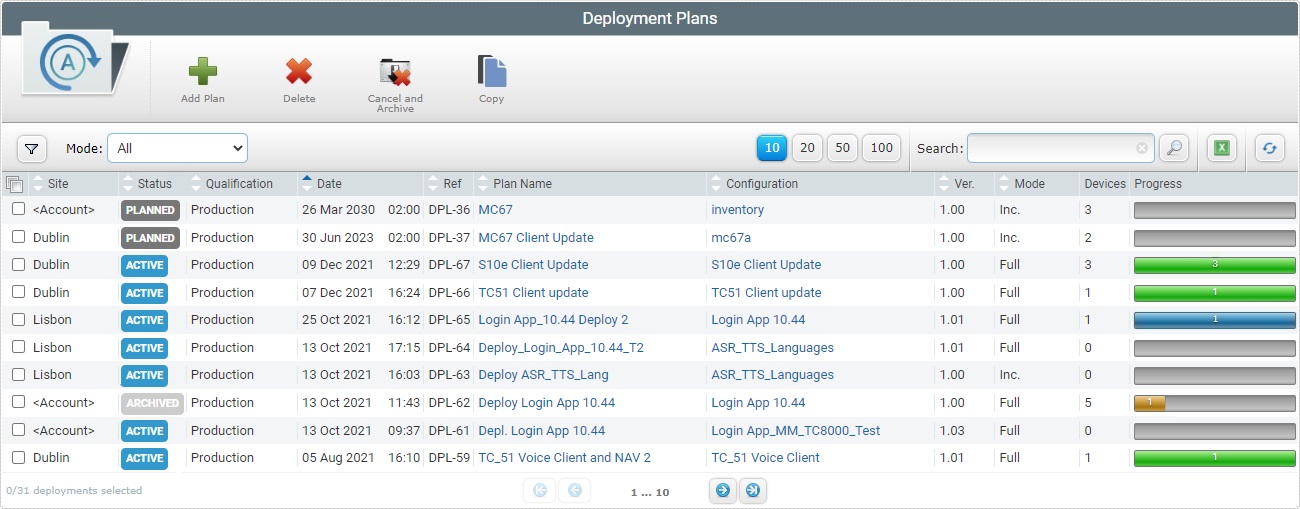
This view displays all the deployments regardless of the current status with the following information:
Site |
The name of the targeted site or "<Account>", if the corresponding deployment was scheduled at account level. |
Status |
Possible deployment statuses: Planned - no device included in the target device group has received the assigned configuration. The deployment waits for the scheduled installation date. Active - no device included in the target device group has received the assigned configuration but the deployment reached the scheduled installation date. Started - at least one device of the specified device group has received the assigned configuration. Archived -the deployment was manually archived or it was canceled (which led to the deployment's automatic archiving). See Canceling and Archiving a Deployment.
If there is a problem with a deployment's execution, the corresponding progress bar will turn brown. Use the "With Errors" view to identify all the failed deployments and correct them. For more detailed info on the error(s), check the device's history (see Device Details - History - DPL tab) and perform the necessary corrections. |
Qualification |
The qualification of the configuration that is being deployed. See Qualification. |
Date |
The deployment's planned date and time. |
Ref |
The deployment's internal reference. |
Plan Name |
The deployment's name (displayed in light blue). Provides direct access to the corresponding "Deployment Plan Details" page. See Deployment Plan Details. |
Configuration |
The name of the configuration being deployed (displayed in light blue). Provides direct access to the corresponding "Configuration Details" page. See Configuration Details. |
Ver. |
The version of the configuration being deployed. |
Inst. Mode |
The selected deployment's installation mode: Full - refers to the "Full install" deployment mode. Inc - refers to the "Incremental" deployment mode. |
Devices |
The number of devices included in the target device group of an ongoing or archived deployment. Therefore, if the deployment has not started, there is no information. |
Progress |
The progress bar refers to the deployment's evolution within the target device group. It includes the number of devices where the deployment has been completed with success. If the progress bar changes its color to brown, it means the deployment was not successfully completed. |
View: Current & Planned
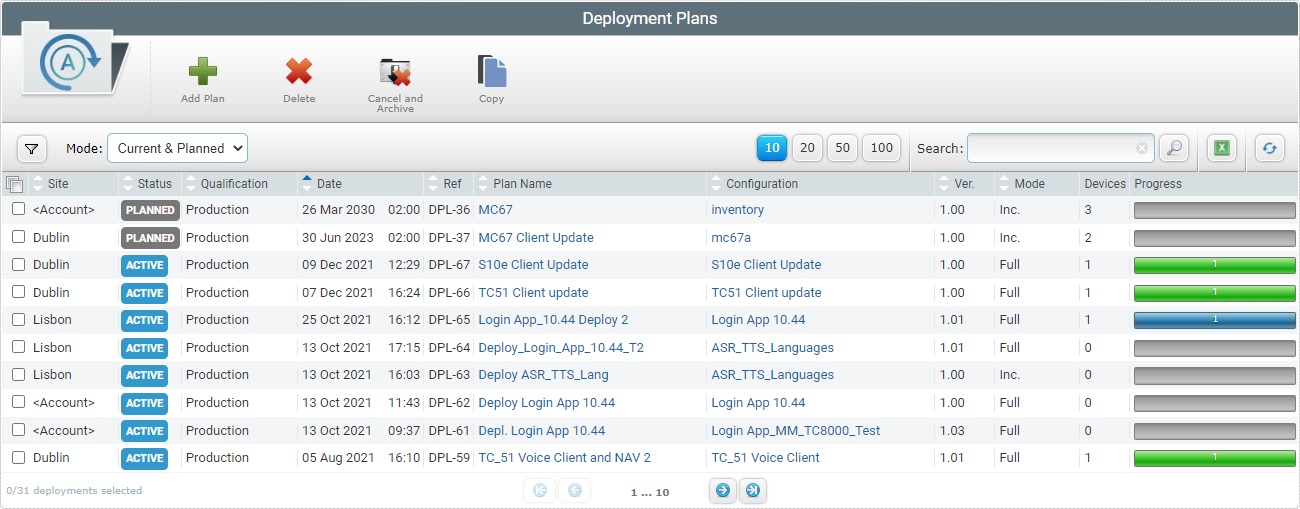
This view displays the planned and ongoing/active deployments (in light blue) and corresponding information:
Site |
The name of the targeted site or "<Account>", if the corresponding deployment was scheduled at account level. |
Status |
Possible statuses for "current and planned" deployments: Planned - no device included in the target device group has received the assigned configuration. The deployment waits for the scheduled installation date. Active - no device included in the target device group has received the assigned configuration but the deployment reached the scheduled installation date. |
Qualification |
The qualification of the configuration that is being deployed. |
Date |
The deployment's planned date and time. |
Ref |
The deployment's internal reference. |
Plan Name |
The deployment's name (displayed in light blue). Provides direct access to the corresponding "Deployment Plan Details" page. See Deployment Plan Details. |
Configuration |
The name of the configuration being deployed (displayed in light blue). Provides direct access to the corresponding "Configuration Details" page. |
Ver. |
The version of the configuration being deployed. |
Mode |
The selected deployment's installation mode: Full - refers to the "Full install" deployment mode. Inc - refers to the "Incremental" deployment mode. |
Devices |
The number of devices included in the target device group of an ongoing or archived deployment. Therefore, if the deployment has not started, there is no information. |
Progress |
The progress bar refers to the deployment's evolution within the target device group. It includes the number of devices where the deployment has been completed with success. If the progress bar changes its color to brown, it means the deployment was not successfully completed. |
View: Planned

This view only displays scheduled deployments (which have not occurred yet) with the following information:
Site |
The name of the targeted site or "<Account>", if the corresponding deployment was scheduled at account level. |
Status |
Planned - The deployment has not started yet, no device included in the target device group has received the assigned configuration. It waits for the scheduled installation date. |
Qualification |
The qualification of the configuration that is being deployed. |
Date |
The deployment's planned date and time. |
Ref |
The deployment's internal reference. |
Plan Name |
The deployment's name (displayed in light blue). Provides direct access to the corresponding "Deployment Plan Details" page. See Deployment Plan Details. |
Configuration |
The name of the configuration being deployed (displayed in light blue). Provides direct access to the corresponding "Configuration Details" page. See Configuration Details. |
Ver. |
The version of the configuration being deployed. |
Mode |
The selected deployment's installation mode: Full - refers to the "Full install" deployment mode. Inc - refers to the "Incremental" deployment mode. |
Devices |
The number of devices included in the target device group of an ongoing deployment or archived deployment. Therefore, at this stage, there is no information. |
Progress |
There is no progress information (the deployment has not started). |
View: With Errors
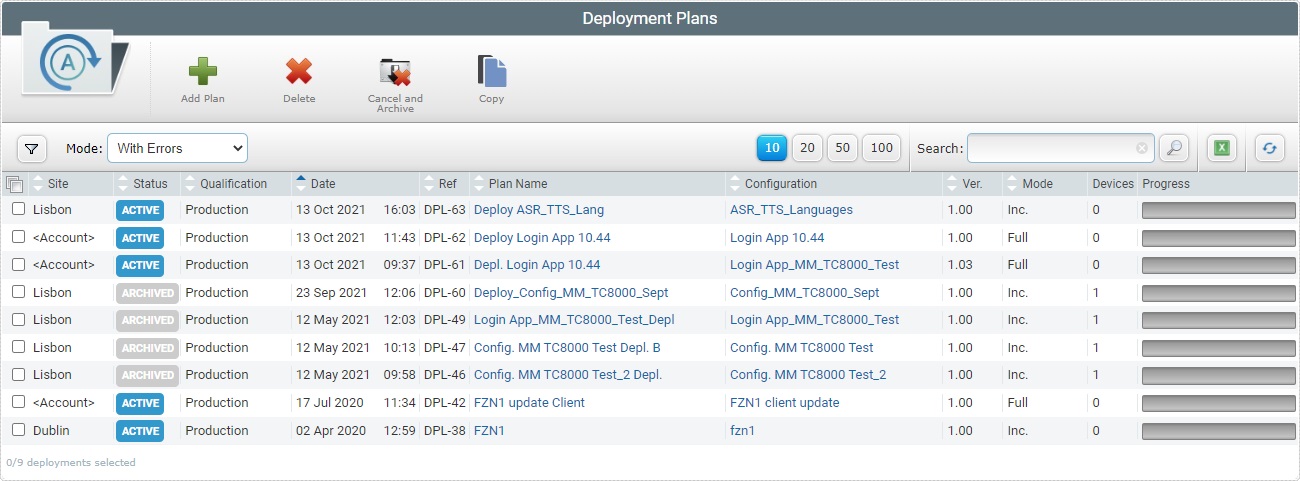
The "With Errors" view only displays deployments that, for some reason, were NOT successful.
Site |
The name of the targeted site or "<Account>", if the corresponding deployment was scheduled at account level. |
Status |
The current status of the deployment that was diagnosed, by the system, as having errors/was NOT successful. |
Qualification |
The qualification of the configuration that is being deployed. |
Date |
The deployment's planned date and time. |
Ref |
The deployment's internal reference. |
Plan Name |
The deployment's name (displayed in light blue). Provides direct access to the corresponding "Deployment Plan Details" page. See Deployment Plan Details. |
Configuration |
The name of the configuration being deployed (displayed in light blue). Provides direct access to the corresponding "Configuration Details" page. See Configuration Details. |
Ver. |
The version of the configuration being deployed. |
Mode |
The selected deployment's installation mode: Full - refers to the "Full install" deployment mode. Inc - refers to the "Incremental" deployment mode. |
Devices |
The number of devices included in the target device group of the ongoing deployment. |
Progress |
The number of devices where the deployment has failed. The color brown of the progress bar indicates that the deployment has failed. |
![]()
A failed deployment (that is NOT archived) requires the user to execute corrective measures or it will keep on trying to execute.
For more detailed info on the error(s), check the device's history (see Device Details - History - DPL tab) and perform the necessary corrections.
There are advanced filters available in the "Deployment Plans" page. To access them, click ![]() (located below the deployment icon).
(located below the deployment icon).
Use the available filters as necessary to limit the deployment display accordingly.
I. Enter data in the required fields/select from the drop-down. You can use as many filters, simultaneously, as necessary.
Name |
Enter the deployment plan's name. |
Status |
Select one of the available statuses from the drop-down - "All", "Planned", "Active or "Archived". |
Last Update |
Select one of the available time lines from the drop-down. |
Qualification |
Select the configuration's qualification. |
II. Click ![]() to filter the display according to the data you added in the "Name", "Status", "Last Update" and/or "Qualification" fields/drop-downs.
to filter the display according to the data you added in the "Name", "Status", "Last Update" and/or "Qualification" fields/drop-downs.
III. Click ![]() to empty all the filters simultaneously OR click the
to empty all the filters simultaneously OR click the ![]() button of the field you want to clear OR select the "All" option in the corresponding drop-down.
button of the field you want to clear OR select the "All" option in the corresponding drop-down.
The "Deployment Plans" page also offers the following options:

•![]() Use these buttons to control how many items are displayed at a time. Click one of the options (10 items per page/20 items per page/50 items per page/100 items per page).
Use these buttons to control how many items are displayed at a time. Click one of the options (10 items per page/20 items per page/50 items per page/100 items per page).
•Use the ![]() box to look for specific list items.
box to look for specific list items.
a. Enter what you want to search for.
b. Click ![]() or press <ENTER> in your PC keyboard to initiate the search.
or press <ENTER> in your PC keyboard to initiate the search.
c. Use one of the following to clean the searched data to start a new search or return to a full view:
•empty the search box and click ![]() ;
;
•empty the search box and press <ENTER> in your PC keyboard;
•click the ![]() icon.
icon.
•![]() Use this button to export a list with the deployments in view.
Use this button to export a list with the deployments in view.
![]() Since the export only includes the information on current display, make sure the page is displaying the intended deployments before you begin the export. Select the most appropriate view in
Since the export only includes the information on current display, make sure the page is displaying the intended deployments before you begin the export. Select the most appropriate view in ![]() and/or click
and/or click ![]() (located below the Deployment icon) to access and use the available filters.
(located below the Deployment icon) to access and use the available filters.
a. Click ![]() .
.
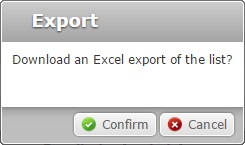
b. Click ![]() .
.
The deployment list is exported with an Excel file format.
The conclusion of the export operation depends on the web browser used. You should be able to save the Excel file in your PC or open it directly after the download.
•![]() Click this button to refresh the page's information.
Click this button to refresh the page's information.
•![]() Use the buttons, included in this bar, to organize/select the listed items of the corresponding column:
Use the buttons, included in this bar, to organize/select the listed items of the corresponding column:
•![]() by ascending order.
by ascending order.
•![]() by descending order.
by descending order.
•![]() Click it to select all the listed items. In this case, all the deployments.
Click it to select all the listed items. In this case, all the deployments.
•![]() Use these buttons, located in the page's footer, to navigate the listed applications:
Use these buttons, located in the page's footer, to navigate the listed applications:
![]() These buttons allow you to navigate between the next/previous grouped items per page.
These buttons allow you to navigate between the next/previous grouped items per page.
![]() These buttons are used to navigate to the first/last grouped items per page.
These buttons are used to navigate to the first/last grouped items per page.
To create a deployment, use the ![]() button. For more detailed information, see Creating a Deployment.
button. For more detailed information, see Creating a Deployment.
To delete a deployment, use the ![]() button. For more detailed information, see Deleting a Deployment.
button. For more detailed information, see Deleting a Deployment.
To cancel and archive a deployment, use the ![]() button. For more detailed information, see Canceling and Archiving a Deployment.
button. For more detailed information, see Canceling and Archiving a Deployment.
To copy a deployment, use the ![]() button. For more detailed information, see Copying a Configuration.
button. For more detailed information, see Copying a Configuration.
This chapter includes all the aspects associated to deployments (the creation/planning, viewing and canceling of this specific task).
Topic/Operations |
Description |
|---|---|
View/edit the details of a deployment. |
|
Create a deployment of existing configurations (see Creating a Configuration) to specific device groups. |
|
Define a date/time for a deployment to start. |
|
Edit deployments with a "Planned" and/or "Active" status. Once the deployment starts ("Started" status), it will NOT be possible to edit it. |
|
If required, copy a deployment. |
|
If required, delete a deployment. |
|
If required, cancel and archive a deployment. |